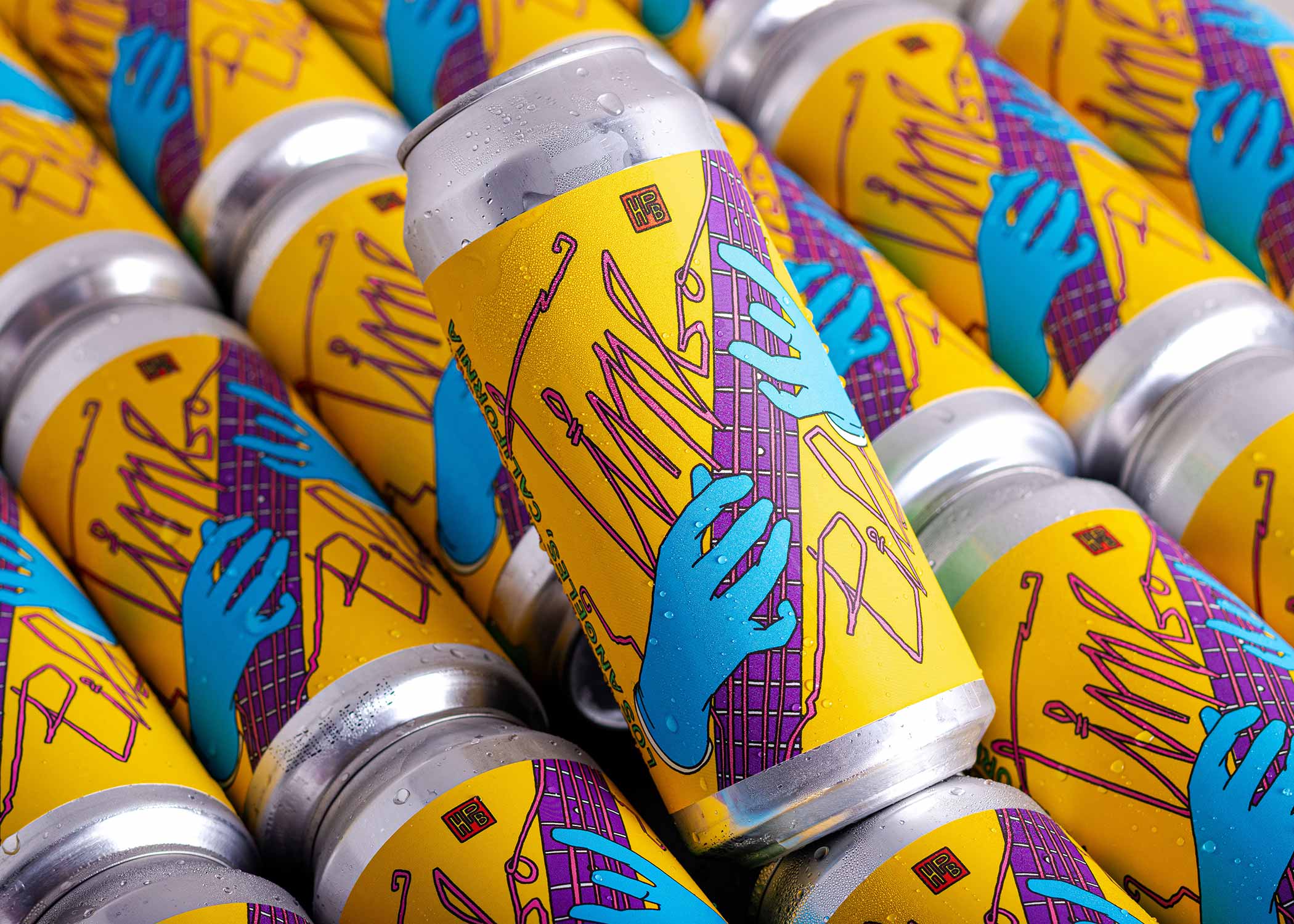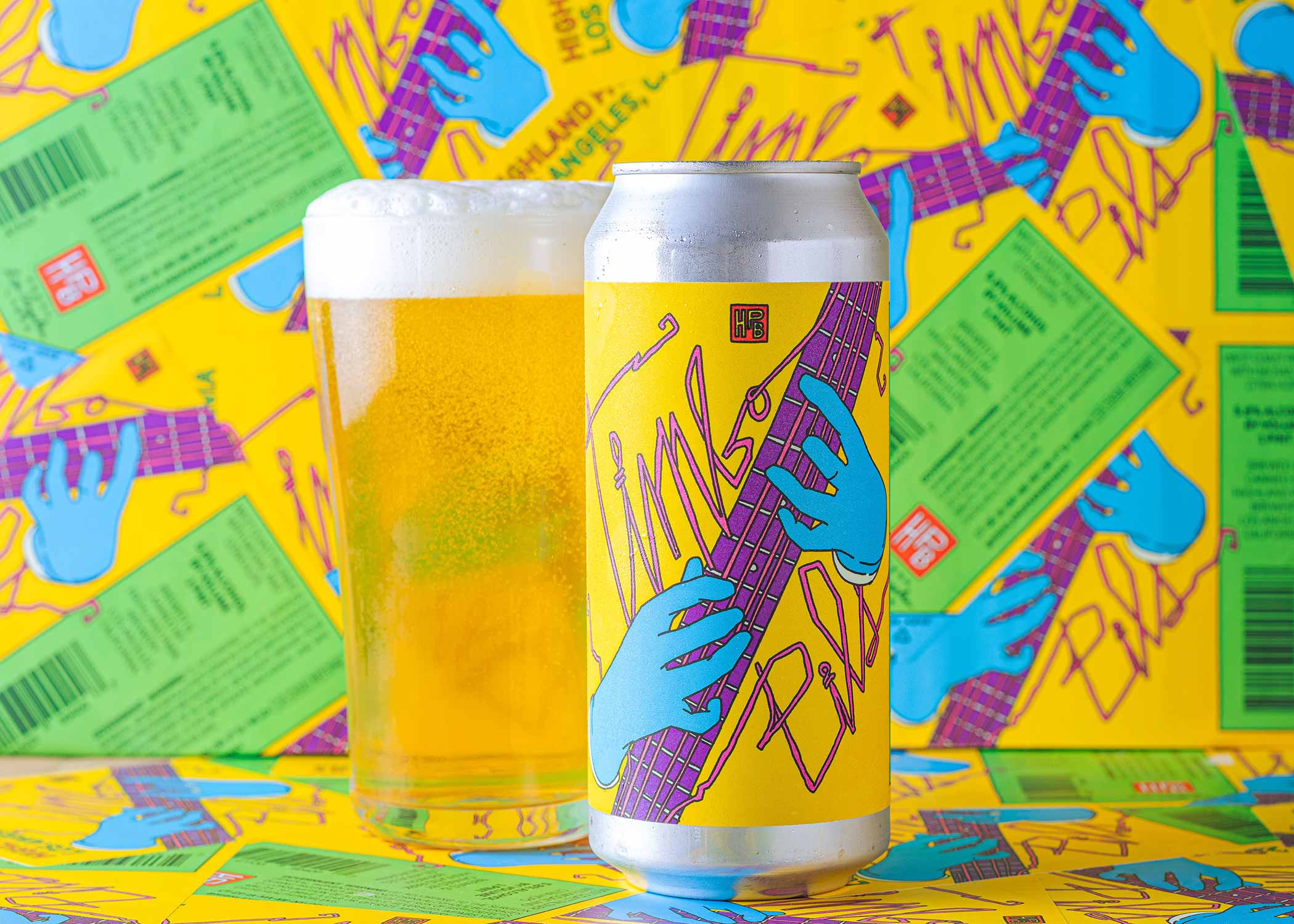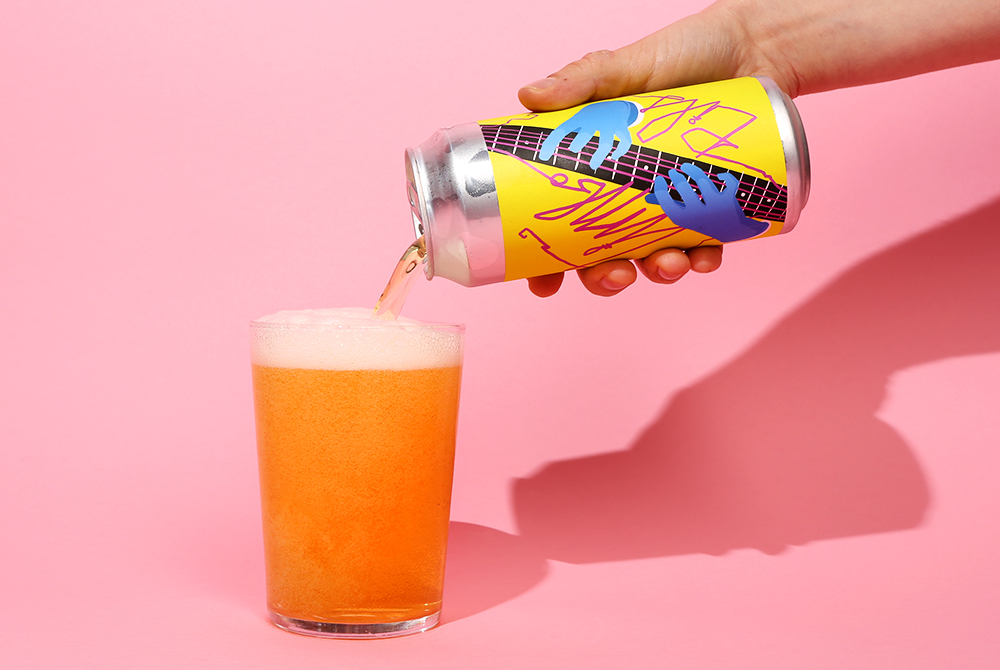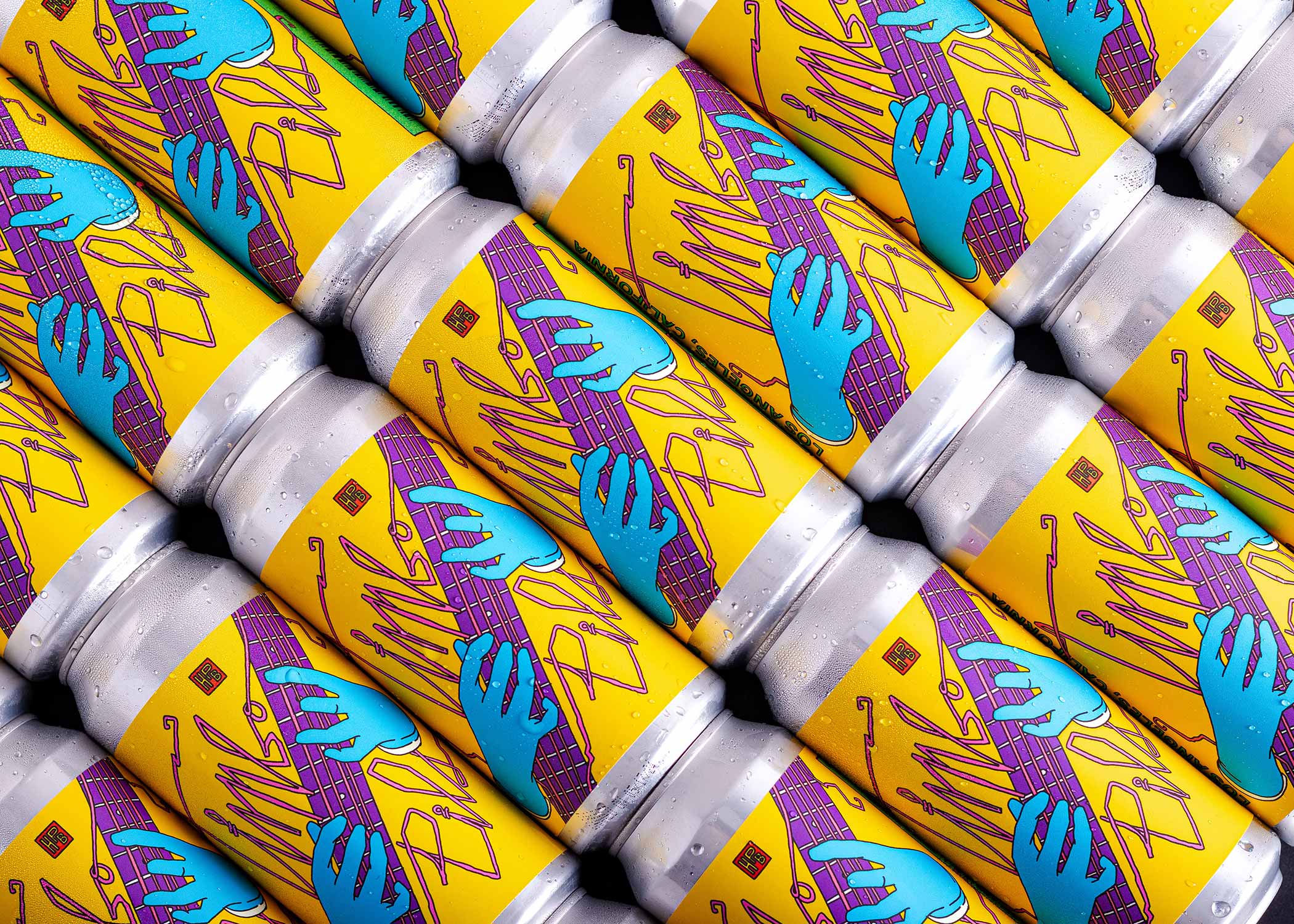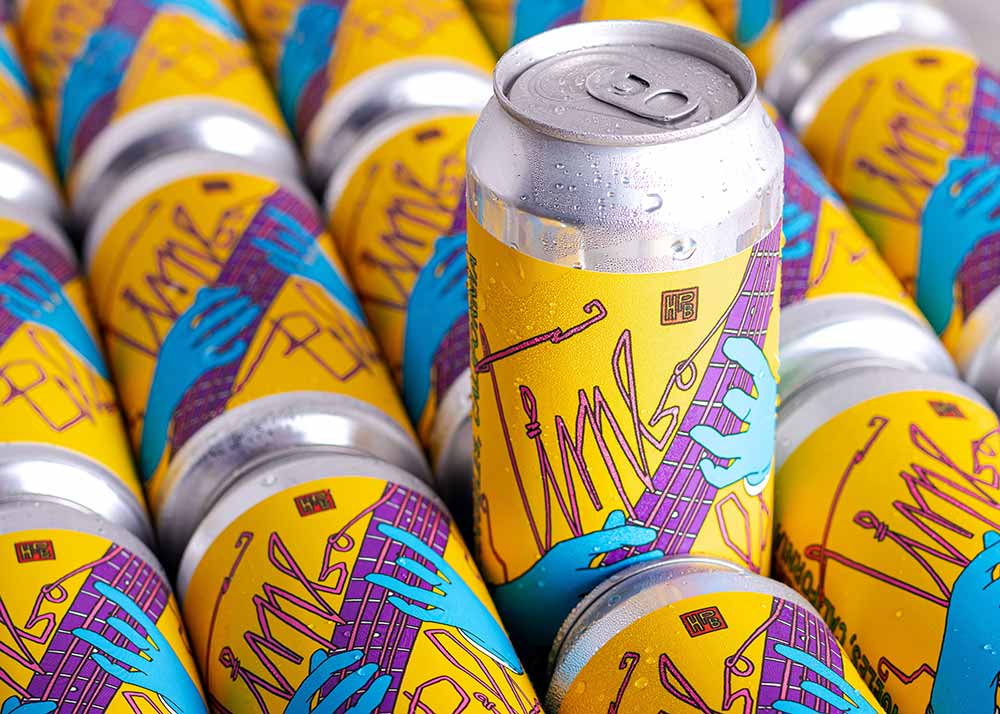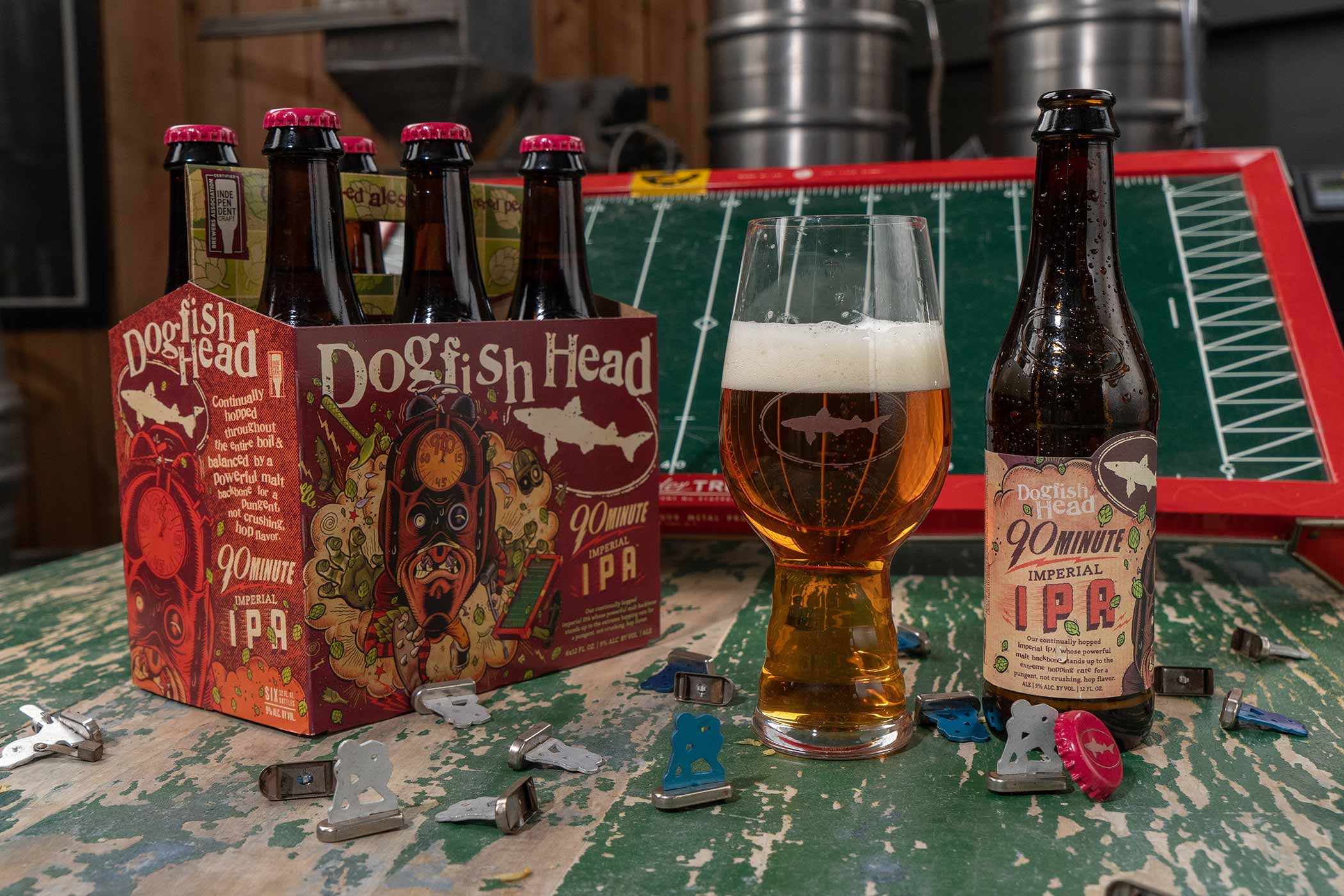Shop
A Happy Accident: The History of Timbo Pils and the West Coast Pilsner
The new hazy?
This Week's Best Articles:
Sometimes the best things materialize from thin air. In 2015, Highland Park Brewery stumbled into what has become an emerging style in craft beer: the West Coast pilsner. As Tim McDonnell, the sour brewer and wood cellar manager at Monday Night Brewing and previous brewer at Highland Park, recalls, the whole thing kind of just happened by accident.
“There was an anniversary party—a cask festival—for this local LA brewery. We were invited and asked to bring a cask,” McDonnell says. “We didn’t have time to brew a new beer specifically for the event, so we had to roll with something we already had.”
McDonnell says that on the spot, they came up with the wild idea of blending a couple of beers already in the tanks.
“We had a pilsner called Refresh, and then a West Coast IPA hopped with Mosaic and Citra, [Hello, LA],” McDonnell says. “Neither made sense, and we wondered how it would blend together. The pilsner lightened up the body, and the hops shined through in a cool way.”
Without any idea if people would like the beer, McDonnell says a funny thing happened. When the festival started, he left their booth and wandered around. When he circled back to try his own blend, “The cask was already gone by the time I got there,” he says. “So I never even got to try it.”
But he says, “I was told it was really good!”
While Highland Park Owner and Brewer Bob Kunz also doesn’t remember trying the beer at the festival, he knew it was good from the samples he drew from the cask before conditioning.
The fifty-fifty blend “got crispness from a pilsner and intensity of the West Coast IPA,” he says.
Fast-forward nearly a decade, and if you talk to a brewer about West Coast pilsner today, they will point to Highland Park.
And that’s no accident.
Making the West Coast Pilsner a Thing
After that festival, McDonnell and Kunz set out to concoct a recipe that duplicated their success with the cask.
“I feel like people were trying to capture what a hoppy pilsner should be called,” Kunz says, noting he believes they coined the term West Coast pilsner.
“We love drinking IPAs, West Coast IPAs, and pilsner,” adds McDonnell. “So we wondered how we could bring the two together.”
What came from that intention was the father beer of the West Coast pilsner style: Timbo Pils.
“At its core, [the recipe] remained the same,” Kunz says. “Citra-Mosaic dry hop. The malt bill has stayed the same. Refresh base had a pils base, and Hello, LA had a two-row base. We split those two with ten percent Carafoam.”
The name is an homage to the beer’s Bohemian body and McDonnell, who says a former colleague at Highland Park called him Timbo Slice.
“I wanted to call it Tim’s Bo Pils, but it got shortened to Timbo Pils,” McDonnell recalls. “I thought it was a funny name, and it seemed to make sense.”
Kunz says McDonnell is a humble guy and wasn’t looking to name the beer after himself, but Highland Park ran with it.
“The label has these silly blue gloves—the gloves we use in the brewery—with white underlining gloves, which Tim wore,” Kunz explains. “Plus, he plays the guitar.”
Even though Timbo Pils really started taking off after McDonnell left to go work at Monday Night on the East Coast, the beer has stayed true to its West Coast pilsner roots.
Just What Makes a West Coast Pilsner?
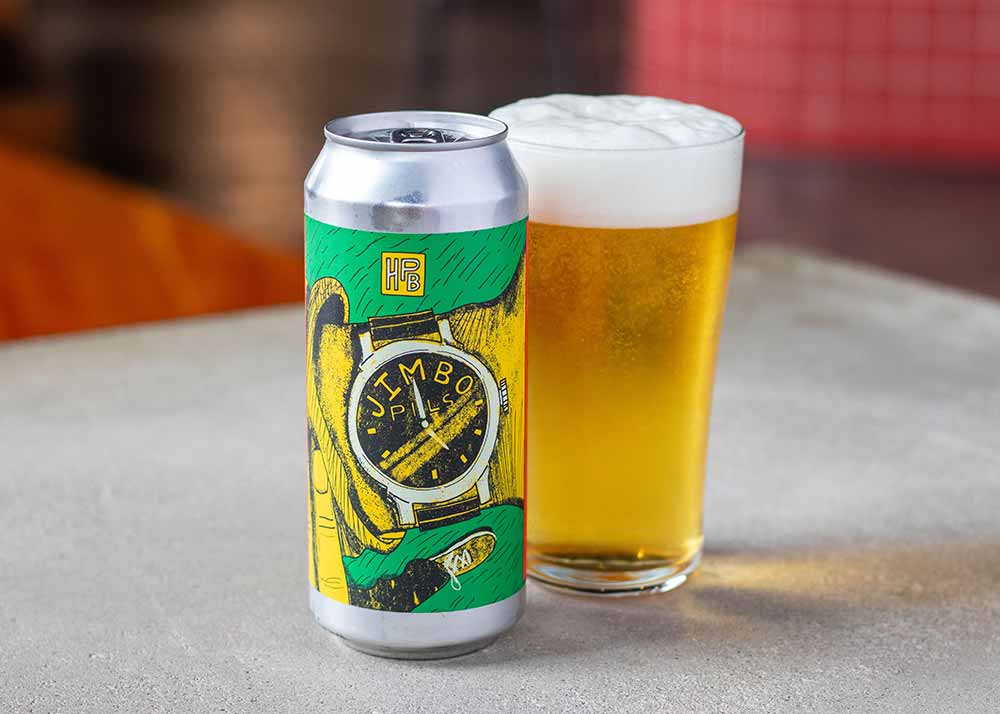
Photography courtesy of Highland Park Brewery
“We’re melding two styles, drawing people in from both sides,” Kunz says. “It’s structured like a pilsner—malts, yeast, hops—but dry hopped like a West Coast with the hop intensity.”
Kunz says they named the style because the terms “West Coast” and “pilsner” are relatable to the consumer.
“We wanted to capture familiar language,” Kunz says. “The term West Coast has an association. Pilsner, that crisp and snappiness, [also] has an association.”
Similar hop-forward beers—like Cold IPA and IPL—ferment with either colder temperatures or lager yeast, but their names can be confusing.
West Coast pilsner rang true.
“We designed it to make it super drinkable but with the intensity of the IPA,” Kunz says. “Our success is achieving that high drinkability that meets hopheads with that intensity.”
Wayfinder Brewmaster Natalie Rose Baldwin knows a thing or two about brewing hop-forward beers with lager yeast. Former Wayfinder Brewmaster Kevin Davey invented the Cold IPA style.
“West Coast pilsner, to me, is a beer that is fermented with lager yeast at a little bit warmer temps than a traditional lager beer,” Rose Baldwin says. “It has some components of a traditional pilsner and lands somewhere between West Coast IPA with lager yeast and Cold IPA.”
Jack’s Abby Owner Jack Hendler says West Coast pilsner, Cold IPA, hoppy lager, and IPL are all similar but have certain differentiation points.
With a West Coast pilsner, “You’re gonna get West Coast IPA hops brewed in a lager,” says Hendler. “That translates to consumers.”
What makes this make sense? Hendler says it all traces back to Timbo Pils.
“Timbo influenced a wide range of brewers getting into the hoppy lager wave,” he says. “For people who like hops, they are going to like this beer.”
I’m Confused. Is It More West Coast IPA? More Pilsner?
“It’s open to interpretation—it might have a lighter body or a fuller body,” according to McDonnell.” Timbo Pils has the fuller body that carries the hops really well.”
So, are you cramming a pilsner into a West Coast IPA or the other way around?
“We look at it on the hot side, similar to the pilsner, and on the cold side, [similar] to the IPA,” McDonnell says.
“We use German malts blended with two-row malt—two bases and blending them together; we add Noble hops on the hot side for bittering and hop additions,” McDonnell adds. “We ferment a little warmer for a lager—mid-fifties Fahrenheit—and get more esters than you normally would get for a lager. And then on the cold side, we dry hop like an IPA.”
Kunz says Timbo Pils has slightly evolved over the years as IPAs have changed.
“IPAs are drastically different now than they were then,” he says. “My mindset was max flavor and aroma and perfect balance—crisp, snappy, and not inundating [the] palate.”
Early iterations would finish dry and have low bitterness. He said they would use two parts chloride to one part sulfate to make the beer extra dry and fill the body with low-alpha-acid vegetal matter.
“It was tropical driven, less dank,” Kunz says of the early versions of Timbo Pils. “As we started to dabble in hazy beer, it was an interesting challenge to differentiate the two. So what slowly started to happen with Timbo was that the water shifted a bit, and bitterness increased.”
The tricky part for Kunz was that people really enjoyed the softer, more delicate, less bitter Timbo pils.
“But I wanted something more snappier,” he says. “I wanted hazies with more softness and roundness, and then the West Coasts to increase snap, crisp, and bitterness.”
Today, with Timbo Pils, you’ll get a crisp, cracker flavor from the malts, but then the hops really burst through. McDonnell believes Mosaic, Citra, Simcoe, and even Motueka hops work well with the style—all hops they’ve used in making Timbo Pils over the years.
McDonnell says the first batch of Timbo Pils in July 2016 had Nelson and Mosaic, but it has evolved over the years depending on lots available that year.
“I really like to have the aroma be fruit-forward with a little dankness in the background and a balanced bitterness in the finish,” McDonnell says. “I love Mosaic as a showcase hop for the fruit, and I think a little bit of Nelson or Strata or even Vic Secret is great for adding complexity and dankness.”
One thing McDonnell says is important with the hop load is to make sure it complements the body of the beer without overdoing it.
“It’s easy to get excited and start throwing tons of hops in this, but you gotta remember it’s still supposed to be a pilsner at its core,” he says.
Rose Baldwin adds that the hot side’s pilsner-like qualities set the stage for the intense hops to shine through on the cold side.
“The structure you get from some Continental/Noble hops at the beginning of the boil [allows] Mosaic/Amarillo bigger aroma hops to shine,” she says, noting for Wayfinder’s West Coast pilsner variations, she adds about a half-pound per barrel during the whirlpool, post-boil, and in a dry hop on the seventh and ninth day. “They aren’t overly bitter, but that’s the trend in West Coast IPAs now.”
West Coast Pilsner Seems Like an Easy Beer to Make
“It’s probably harder than most people think,” McDonnell says. “You have to be careful not to overwhelm the beer with the hops. You can’t dry hop at four pounds per barrel—it could be too much.”
Kunz says, after looking at their West Coast IPA and West Coast pils side by side, “We actually like the hop expression on the West Coast pilsner more.”
But McDonnell says it’s all about finding the right hop balance, noting, “If you go too far in one direction, it can throw the beer out of whack.”
Rose Baldwin advises against using woody, floral, or spicy hops in a West Coast pilsner, but other than that, it’s pretty straightforward.
Hendler adds that typical German beer falls in the 11 or 12 Plato range to start, but the Timbo Pils starts around 13.5 Plato. It’s a middle ground from an IPA, which falls around 15 Plato. This all plays into what kind of body you will have with the beer.
“You need a body to balance against all these hops,” Hendler says. “And you need to make that determination and how dry you want to make it.”
Hendler adds, “On the flip side, the dryness can accentuate the beer. To have that pilsner character, it’ll be dryer than not.”
Why Is the West Coast Pilsner Such a Hit?
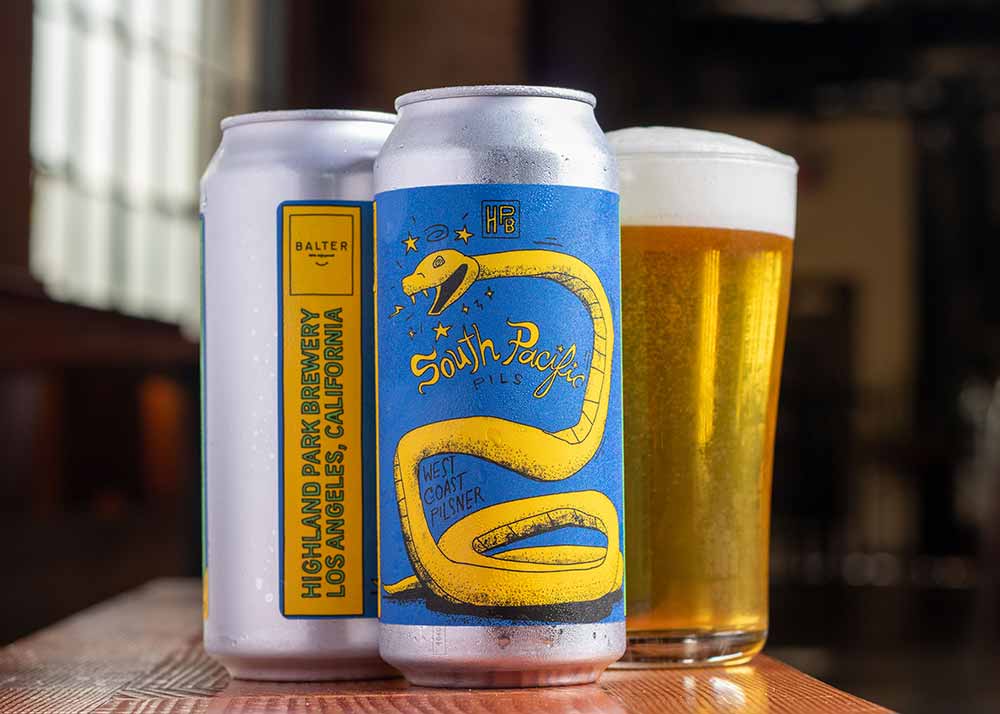
Photography courtesy of Highland Park Brewery
“We didn’t think it would be this big; We were just making something we knew we wanted to drink,” McDonnell says. “It’s crazy; it was almost a happy accident.”
Kunz thinks with Timbo Pils, “We hit a nerve.”
He adds, “Timbo is a beer we sell and brew the most, and consumers have bought into it.” Today, the brewery even celebrates Timbo Day every year (this year on July 26) when they offer a handful of different Timbo Pils iterations—Timbo Pils, DDH Timbo Pils, Jumbo Timbo, etc.
That said, Kunz notes the fine line they have to tread.
“The reality is West Coast pilsner isn’t familiar terminology for consumers yet,” Kunz says. “It’s doing this thing where you alienate both sides—too hoppy for pilsner drinkers, too pilsner for IPA drinkers.”
McDonnell says the style challenges what craft drinkers have been going for lately—higher ABV and sweet.
“West Coast pilsner is a dryer, crisp type of beer,” McDonnell says. “It’s contradictory to what IPAs are doing in general. This lightens the IPA and brings the ABV down.”
But he believes the pilsner is getting more popular with craft beer drinkers.
“They are looking for something crisper and lower ABV and loaded with flavor,” he says. “This fits a little niche that is growing because people are getting tired of drinking sweet beers in general.”
Rose Baldwin says it appears to be a hit mostly in the Pacific Northwest where “people will have one or two West Coast pilsners on, but it’s not quite the haze craze where they had five on at a time,” she says. “These were made before Cold IPA, but now people have more understanding of what yeast is going into their beer.”
Does the West Coast Pilsner Style Have Legs?
Kunz says it’s difficult to gauge the style’s popularity because it’s hard to tell the beer-sphere bubble from the general audience.
“For brewers, it has gained traction. I’m seeing it on the shelf more, but sometimes that doesn’t translate to sales,” Kunz says. “It feels like it’s on the cusp of surviving as a style, but the general consumer isn’t aware of it.”
McDonnell thinks something intangible makes this a strong style.
“It’s organically grown,” he says. “Cold IPA, everyone was talking about it, and it was super hyped. The West Coast pilsner hasn’t been super hyped, but it is growing in an underground type of way.”
When he made the West Coast pilsner in Los Angeles, it was the perfect setting for the style, as consumers on the West Coast really love hop-forward crisp beers. Now, in Georgia, at Monday Night, the consumers are different. But he doesn’t think that will stop the style from spreading nationwide.
“It will pick up here, even if we’re doing it more as a seasonal,” McDonnell says. “The style will definitely work its way around the country.”
McDonnell says Monday Night is making its own West Coast pils in a pilot batch soon. The beer, Fuzzy Little Kittens, will have Mosaic, Simcoe, and a touch of Nelson.
“I’m pretty excited about this one,” McDonnell says. “I’m hoping this one will be more of a regular offering soon, and we can get it in cans by the end of the year.”
Rose Baldwin thinks there is a place for West Coast pilsner. “It’s not as popular as some other styles, but it’s definitely gaining in popularity,” she says.
Hendler says that on the East Coast, there isn’t a huge presence of West Coast pilsner, but he hopes this will change.
He’s planning to make one at Jack’s Abby because, as he’s hypothesizing, “I don’t think this style is going to be a fad.”

